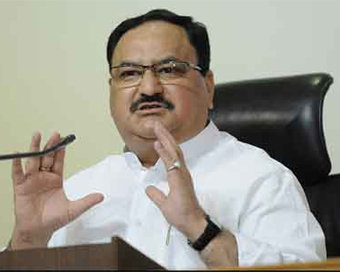New Delhi: A latest survey by the government has shown positive trends in key health indicators, including an improvement in sex ratio at birth and a decline in infant mortality rate during 2015-16.
The National Family Health Survey -4 (NFHS-4) for 2015-16 unvield by the Health Ministry was conducted after collecting information from 6 lakh households, 7 lakh women and 1.3 lakh men, and for the first time provide district level estimates.
“Infant Mortality Rate (IMR) declined from 57 to 41 per 1,000 live births between NFHS-3 (2005-06) and NFHS-4. IMR has declined substantially in almost all the states during the last decade. It dropped by more than 20 percentage points in Tripura, West Bengal, Jharkhand, Arunachal Pradesh, Rajasthan and Odisha.
“IMR substantially declined over the period from 79 per 1,000 live births in NFHS-1 (1992-93) to 41 per 1,000 live births in NFHS-4,” Health secretary C K Mishra said.
According to the Health Ministry, the results of the survey reflected that concerted efforts and focussed interventions in the sector could translate to improved outcomes.
The survey also stated that sex ratio at birth (number of females per 1,000 males) improved from 914 to 919 at the national level over the last decade with the highest in Kerala (1,047), followed by Meghalaya (1,009) and Chhattisgarh (977).
Haryana also witnessed a significant increase from 762 to 836.
Similarly, institutional births “dramatically” increased by 40 percentage points from 38.7 per cent in NFHS-3 to 78.9 per cent in NFHS-4.
There was an increase of 34.1 per cent institutional births in public facility, while the Empowered Action Group (EAG) in Assam experienced more than a 40 percentage point increase, the survey said.
“Targeted approach through Janani Suraksha Yojana (JSY) has paid off,” Mishra said.
The Ministry said the proportion of women who received at least 4 antenatal care visits for their last birth has increased by 14 percentage points from 37 per cent to 51.2 per cent over the decade (2005-15), while there has been a substantial increase of 20 or more percentage points in seven states.
Total Fertility Rate (TFR) too declined to 2.2 children per woman from 2.7 in NFHS-3 moving closer to target level of 2.1, it said.
The survey found that there was considerable decline in the TFR in each of the 30 states in India with the maximum decline observed in Uttar Pradesh (1.1 child) followed by Nagaland (1.0 child), Arunachal Pradesh and Sikkim (0.9 child each). Bihar, however, failed to register substantial decline.
“Children within the age of 12-23 months have been fully immunized (BCG, measles and 3 doses each of polio) and DPT increased by 18 percentage points from 44 per cent in NFHS-3 to 62 per cent in NFHS-4,” it said.
The survey found that the full immunization coverage increased in
Punjab, Bihar and Meghalaya by 29 percentage point each, while in Rajasthan, Uttar Pradesh, Jharkhand and Chhattisgarh it increased by 28 percentage points each.


















